Upcoming Field Trips, Speaker Series, and Travel Opportunities
Field Trips and Speaker Series
Click on each event to learn more and to register
Click on each event to learn more and to register
Art by Laurie Kaufmann
Stay put. Count birds. Raise money! IOS invites you to join other birders throughout Illinois on the weekend of September 22-24 for the annual IOS 2023 Big Sit Competition and Fundraiser. Sign up below and pick a day on the weekend to sit in one spot and count as many species of birds as possible, whether in your yard or your favorite park or preserve. You can count as an individual or family or teams of up to five (additional participants can come and go from your count circle as long as no more than five people are in the circle at one time and social distancing and state guidelines are followed). Teams are also invited to help solicit donations for their team and use the event as a fun way to help us raise funds for IOS. The 2023 IOS Big Sit funds will go towards supporting IOS and IOS initiatives like the Illinois Young Birders and the IOS Grants program.
A Big Sit, similar to a Big Day, is a competition where a team of birders counts as many species as possible within a 24 hour period. While the Big Day involves moving around from spot to spot to maximize species sightings, a Big Sit is precisely as it sounds. You stay in one location, a 20ft diameter circle called a “count circle”, and only species seen or heard from that circle count for the final tally. Count wherever you want and as long as you want during your chosen count day. The Big Sit is all about slowing down and enjoying good company, great birds, and, in this case, supporting a good cause! Full rules can be read here.
To start a fundraiser, you will need to create a Donately account if you do not already have one. It is very straightforward. Don’t forget a creative name! Don’t forget to set a fundraising goal for yourself!
Donors can do a 1-time donation, or they can pledge to donate an amount “per species” and complete their donation after you announce your final species total to them. NOTE: Your team is responsible for keeping track of “per species” donors and reminding them to donate afterwards! Encourage donors that they can donate both ways!
On your competition day, sit back, relax, and have fun counting birds. Share your highlights as the day progresses in the new IOS Facebook Group. (A submission form will be posted closer to the event date to submit your final species total and any highlights you want to share from your day).
Anyone interested is invited to join us for a virtual after party online as we share highlights with one another and announce winners. Prizes will be awarded for the team that counts the most birds and for the team that raises the most in donations (details to be announced).
If you are not supporting a specific team, feel free to pick one to support or you can submit a general donation to IOS.
Aerin Tedesco
IOS Big Sit Event Coordinator
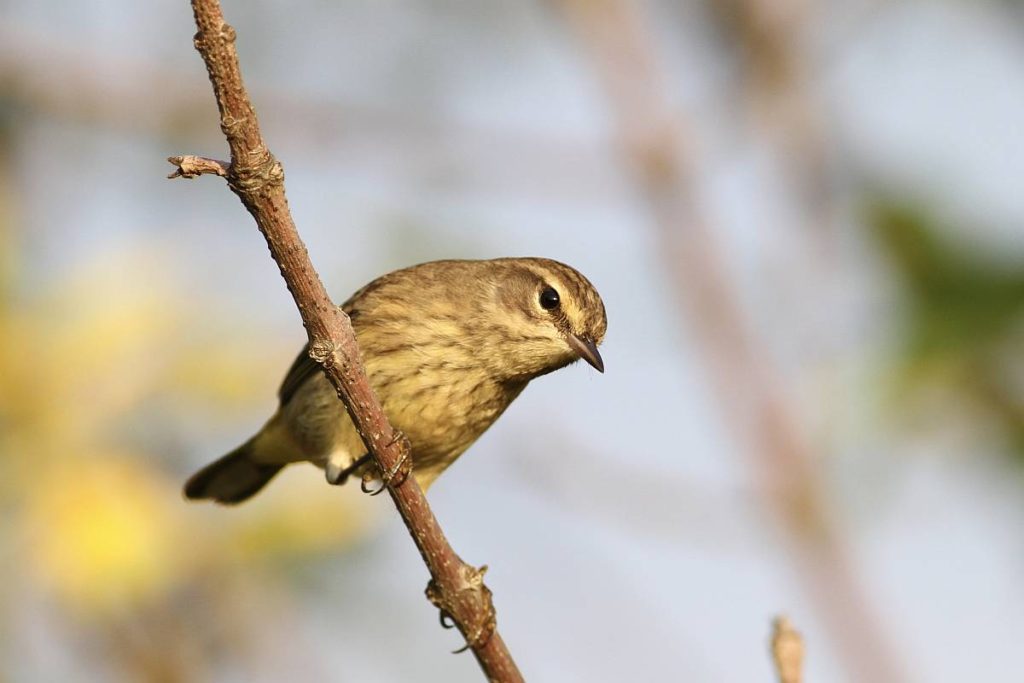
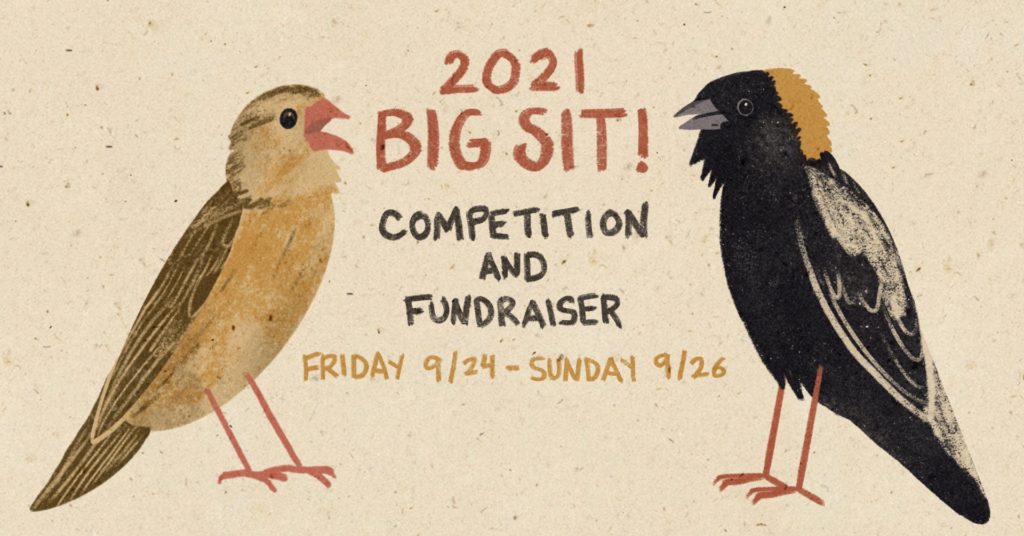
Stay put. Count birds. Raise money! After the success of the spring IOS Backyard Big Day, IOS invites you to join other birders throughout Illinois on the weekend of September 24-26 for the IOS 2021 Big Sit Competition and Fundraiser. Sign up below and pick a day on the weekend to sit in one spot and count as many species of birds as possible, whether in your yard or your favorite park or preserve. You can count as an individual or family or teams of up to five (additional participants can come and go from your count circle as long as no more than five people are in the circle at one time). Teams are also invited to help solicit donations for their team and use the event as a fun way to help us raise funds for IOS. The 2021 IOS Big Sit funds will go towards supporting IOS and IOS initiatives like the Illinois Young Birders and the IOS Grants program. A prize will be awarded to the team that raises the most funds.
A Big Sit, similar to a Big Day, is a competition where a team of birders counts as many species as possible within a 24 hour period. While the Big Day involves moving around from spot to spot to maximize species sightings, a Big Sit is precisely as it sounds. You stay in one location, a 20ft diameter circle called a “count circle”, and only species seen or heard from that circle count for the final tally. Count wherever you want and as long as you want during your chosen count day. The Big Sit is all about slowing down and enjoying good company, great birds, and, in this case, supporting a good cause! Full rules can be read here.
To start a fundraiser, you will need to create a Donately account if you do not already have one. It is very straightforward. Don’t forget a creative name! Don’t forget to set a fundraising goal for yourself!
Donors can do a 1-time donation, or they can pledge to donate an amount “per species” and complete their donation after you announce your final species total to them. NOTE: Your team is responsible for keeping track of “per species” donors and reminding them to donate afterwards! Encourage donors that they can donate both ways!
On your competition day, sit back, relax, and have fun counting birds. Share your highlights as the day progresses in the new IOS Facebook Group. (A submission form will be posted closer to the event date to submit your final species total and any highlights you want to share from your day).
Anyone interested is invited to join us for a virtual after party online as we share highlights with one another and announce winners. Prizes will be awarded for the team that counts the most birds and for the team that raises the most in donations (details to be announced).
If you are not supporting a specific team, feel free to pick one to support or you can submit a general donation to IOS.
Aerin Tedesco
IOS Big Sit Event Coordinator

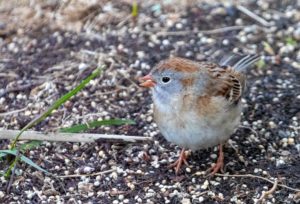
April 22, 2020 – The Illinois Ornithological Society Backyard Big Day went beyond our expectations on so many levels! Nearly 200 households participated from 34 counties in Illinois. People birded from their backyards, apartment windows, apartment building rooftops or grounds. Birders are known to be competitive and spirited, and friendly exchanges were posted throughout the day. One common theme emerged, surprise at what one could find in their own backyard or outside their window or from their rooftop if they looked long enough. You would think Matthew Cvetas, ace birder, past president of IOS and past ebird reviewer for Cook County would have “seen it all” in his Evanston backyard. Yet it was only mid-morning when he posted with much fanfare that he had a LeConte’s Sparrow in his yard! Having a land-locked yard did not doom one to land birds, as one of Amanda Tichacek’s early flyovers over her Skokie yard was a Common Loon. An apartment living situation did not condemn one to a paltry null list for the day, quite the opposite in fact, especially if your apartment benefited from direct (albeit distant) views of the Montrose Harbor and fish hook Pier, as in the case of Geoff Williamson, who ended the day with some 30 species out of his window. Birders were treated to migrating Broad-winged Hawks, mating birds of all stripes, first-of-year birds, yard lifers, lifer lifers, etc. One yard however, raked in one species after the other throughout the day for a total of 54 species, including a Worm-eating Warbler, a Yellow-throated Warbler, another 8 species of warblers, vireos, tanagers…Rhonda Rothrock’s yard at the edge of Shawnee National Forest was a microcosm of the forest itself.
Depending on circumstances, we may hold another backyard competition in May. Please watch the IOS Facebook page, Red Hill Birding Facebook page and the IBET mailings for further announcements.
If you are new to IOS and would like to learn more about the organization please spend some time exploring the website. We would love to have you join as a member or make a donation to support many of our initiatives. The Illinois Ornithological Society publishes Meadowlark, which documents the highlights of bird life in Illinois. IOS also provides grants to college students for ornithological research, and is the parent organization for Illinois Young Birders. Adam Sell is a board member and secretary of the organization.
Josh and Adam both lead tours for Red Hill Birding, which has run fundraising tours for IOS to Panama, Montana, and (soon) to Colombia. Show them your support by liking Red Hill Birding on Facebook and following them on Instagram.
[pdf-embedder url=”http://www.illinoisbirds.org/wp-content/uploads/2020/04/IOS-Backyard-Big-Day-Results.pdf” title=”IOS Backyard Big Day Results”]
March 25, 2020 – As a way to showcase the redesigned Meadowlark Magazine to potential members, and in light of people being stuck at home more during the stay-in-place order, we are happy to announce that the latest issue of Meadowlark Magazine is available online here as a gift to the entire birding community. We hope you enjoy it!
To our members and those slated to receive this issue of Meadowlark, our printer is currently still operating as an essential business. There may be delays, but we expect you to receive your print copy in the mail within the next few weeks.
If you are not currently a member or let your membership lapse, we encourage you to become a member today and help us continue to grow IOS as an organization. In light of the current economy and the fact that we have already had to cancel outings that we rely on for revenue, we are particularly grateful to those who can join at the “Contributor” level or higher or are able to make an extra donation to support the work of IOS.
Finally, thanks to everyone who contributed to this issue of Meadowlark either through documenting rare bird sightings with IORC, sending us photos, posting sightings in eBird, writing articles, or assisting field reports and field notes.
Matt Igleski
IOS President
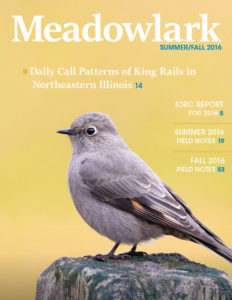
Dear Friends and Fellow IOS Members,
At the beginning of the year, I wrote to you that Meadowlark publishing would be temporarily suspended due to the resignation of our chief editor, Sheryl DeVore, along with field notes editors, David Johnson and Steve Bailey. Sheryl, David, and Steve were longtime volunteers with the Illinois Ornithological Society (IOS) and we wouldn’t be where we are today without their leadership, dedication, and considerable efforts. If you were to open the very first issue of Meadowlark published in 1992, you would find Sheryl’s and David’s names inside. Over the next 25 years, each played a significant role in not only producing this magazine, but driving IOS forward. For this, we are eternally grateful. We thank them for their many years of service and will miss them greatly.
I also mentioned in that same letter that, if we’d like to see this journal continue, we needed to recruit and assemble a new staff of invigorated volunteers. To that end, the board and I searched for, identified, and brought on several fresh faces including Jill Anderson and Matt Hayes. Jill has been a long time supporter of the IOS grants program and has previously contributed articles to Meadowlark. We welcome her as the new fall field notes editor. Prior to joining IOS, Matt Hayes served as Wisconsin Society of Ornithology’s Research Committee Chair. We welcome Matt as the new breeding season field notes editor. Finally, we selected Eric Secker as our new chief editor. Eric brings a wealth of talent and experience to our staff as a designer in both print and digital media. We couldn’t be more excited to have all of them on board.
Our goal has always been to produce an engaging quarterly magazine, documenting the status of birds and birding in the state of Illinois while highlighting your seasonal field notes, photos, and original drawings, as well as technical papers on local avian studies. Over the past few years, the IOS Board and I realize that we have fallen woefully behind in our obligation to publish on time. To rectify the situation, our newly assembled staff have put together an aggressive plan to get caught up. Arriving soon is the first of several issues in support of that effort. In addition, we have completely redesigned Meadowlark’s look and feel. We think you’ll like what you see and read not only in the first issue, but future issues coming soon.
Now, more than ever, we need your support to continue not only Meadowlark, but also our many valuable programs – Illinois Young Birders, Research Grants, and our one of a kind field trips. Help us achieve our goals in bringing IOS all the way back. We want you as an active participating member. Why not renew your membership today?
Matthew Cvetas
IOS President
Greetings birders,
For those who don’t know me, my name is Eric Secker and I am the new chief editor and designer for Meadowlark magazine. I’m excited to announce that we are getting back on track and quickly working through back issues to get caught up to 2019. This week, the first catch-up double issue of Meadowlark will begin arriving in the mail to both current members and individuals with memberships that lapsed during the time there were delays in production. In addition to getting caught up, I’m very excited to share that future Meadowlark issues will be in full color with photos filling more to the edges of the pages and a new expanded size magazine format. I can’t wait to share the first few issues with you.
If you aren’t already a member of IOS or have let your membership lapse, now is an excellent time to join again so you don’t miss out on what’s to come. Also, I need your help through your contributions and the contributions of many other volunteers. Together, let’s make Meadowlark the Illinois birding journal for showcasing the sightings, stories, data, and research going on in the Illinois birding community. If you have questions, comments or feedback, or want to volunteer, please reach out to me. You can learn more on the Meadowlark Journal Info page.
Here’s to all the exciting things ahead!
Eric Secker
Chief Editor
IOS Meadowlark Magazine
Recent decisions by the Illinois Ornithological Records Committee (IORC) resulted in the addition of Barnacle Goose as the 445th species on the official Illinois State List of birds. The record that added Barnacle Goose to the list involved the bird found by Andrew Aldrich on 27 November 2012 in Oswego, Kendall County and subsequently seen through 16 December 2012 at various Kane County, Kendall County, and Will County locations. For any record to accepted by IORC, six or seven of the Voting Members of the committee must vote positively. This case merited six positive votes, with one dissenting vote cast on the basis of origin.
The set of records recently evaluated by IORC included seven involving Barnacle Goose. Because the question of origin in addition to that of identification arises in cases of Barnacle Geese, and because potential first state records attract extra scrutiny, the documentation of each of these seven observations needed to be particularly strong to garner acceptance. Three of the records did not make the cut, one on the basis of identification and the other two on the basis of origin. Three records will be circulated within IORC for a second round of review. (Records can go through as many as four rounds of review before reaching a final disposition.) The Kane/Kendall/Will County record from 2012 was the only one of the seven to gain acceptance in the first round.
Barnacle Goose in Kendall County, 28 Nov 2012.
Photograph by Andrew Aldrich.
Photographic evidence included in the accepted record made clear the bird’s identification as a Barnacle Goose. In comments accompanying their votes, IORC Members cited a variety of factors that supported the bird being a wild vagrant individual. These factors included the dates of occurrence, the documentation including evidence of the individual traveling with a flock and evidence of the species mix of that flock, and the documentation making a compelling case that the goose showed no signs of prior captivity.
There are 23 instances of Barnacle Goose in Illinois that have been cited in the literature, appeared in eBird checklists, or for which evidence potentially allowing review is otherwise available. The seven records recently considered by IORC are among these. IORC previously evaluated two of the other records; questions of origin resulted in neither of these being accepted.

The Illinois Ornithological Society (IOS) has been going strong for more than 25 years, long before I first raised my binoculars in the prairie state. IOS was founded by a group of like minded individuals who shared a common goal of wanting to document the status and distribution of our birds. At the time of its inception, IOS filled a niche, creating a statewide organization that could galvanize a broader birding community. The medium, which they chose to document bird life, we know now as the venerable, Meadowlark, a scientific journal that has provided engaging content, beautiful locally sourced artwork and photos, thorough seasonal field notes from contributors across the state, as well as avian research articles from IOS grants recipients.
The effort it takes to produce one issue of Meadowlark is vast. Countless hours are spent by a few dedicated volunteers chasing articles and photos, compiling seasonal data, and laying out the publication. Because of a limited number of resources and the substantial amount of time it takes to produce seasonal field notes from an explosion of data in recent years, we have fallen well behind our desired publishing schedule. On top of this, we recently accepted the resignation of our talented editor, Sheryl DeVore, along with field notes editors, David Johnson and Steve Bailey. All of them are long time volunteers with IOS and we wouldn’t be where we are today without their considerable efforts. We thank them for their service and will miss them greatly.
I would be lying if I said the future of the magazine were anything but uncertain at this time. Have you ever heard of the saying, “If you want something done, ask a busy person to do it?” Well, that has been the case for many years with IOS. We have continued to rely on a small pool of dedicated volunteers to produce this journal that are now no longer available. If we’d like to see the journal continue in its current form, we need to assemble a new staff of invigorated volunteers. IOS needs you to help us fill that void now. Until we have the right people on staff and a plan to go forward, I regret to tell you that MEADOWLARK PUBLISHING WILL BE TEMPORARILY SUSPENDED.
The IOS Board is hard at work evaluating all of our programs including Meadowlark and putting together plans to take this organization forward. Everything is on the table and we would love your input on how best to proceed. After all, this is a membership organization and every voice counts. To that end, we implore you to COMPLETE OUR MEMBERSHIP SURVEY. It will only take 5-10 minutes of your time and will provide us valuable insight.
In my next communication to you, I hope to have some resolution to this issue. In the meantime, if you have an interest in joining our team, contact us and get involved today. I promise that you won’t regret it.
Matthew Cvetas
IOS President
In this fourth article (Part I) I’d like to address a more technical topic-that of shooting modes. In my first article I advised that you begin your photography journey in Program mode-the automatic mode that lets your camera choose your aperture, your shutter speed and your ISO setting; in other words the camera controls the exposure triangle. I recommended this because the exposure triangle can be confusing and overwhelming when we first begin-and often turns folks away from photography in my opinion. But as we advance we learn that artistic interpretation begins with controlling these factors ourselves.
So let’s talk briefly about the exposure triangle. Aperture is basically the size of the shutter opening in the lens that lets light onto the camera sensor (which records the image). It is similar to the pupil of your eye-which can open and close to allow a comfortable amount of light into your eye. This size is designated by an f number (or stop). f4, f5.6, f8, f11, f16 being the most common f numbers (or stops) used across brands/models. Counterintuitively, the smaller the f number the wider the shutter opening (f4 being a wider opening than f22).
The final effect of aperture on images is in Depth of Field-the area of the image that is sharp from front to back. The smaller the f number, the less depth of field. Less depth of field in portraiture (which is often what we are doing in wildlife photography) creates an effect called bokeh. Bokeh is the visually pleasing level of blurriness surrounding our central subject. Bokeh directs our attention to the main subject-the portrait of the bird.
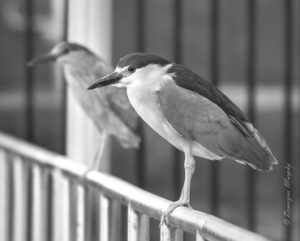
F5.6 and 1/250, ISO 2000
This image illustrates the use of bokeh-a less distinct background that lends almost a painterly effect. This was purposeful and achieved with the smallest f stop my lens offers at this focal length.
Shutter speed is the length of time that your shutter remains open, allowing light to pass onto the sensor. Shutter speed is measured in seconds or fractions of seconds. 1/4 means a quarter of a second. 1/250 means one two hundred fiftieth of a second. 1/4 being a longer exposure than 1/250.
The final effect of shutter speed on images is motion blur. The faster the shutter speed the more likely that your camera can “freeze” the action of your subject-capture it in a sharp way. Slower shutter speeds are less able to freeze motion. There are certainly artistic reasons, even when photographing wildlife-for wanting to blur our subject. This can lead to appealing effects of motion and light. But more often than not we’d like to freeze a bird in action so that the image is sharp and clear. The image of the hawk below illustrates a shutter speed fast enough to freeze the action (1/1250) without blurring of the wings. This shutter speed was possible because there was sunlight available and because I increased my ISO to 1250. (The lack of absolute clarity was due to camera motion from not using a tripod-see my prior article on this site!! Though an exception to the tripod caveat ((seems like there’s always an exception in photography)) is that had I been carrying a tripod I would probably have missed the shot altogether. This scene exploded unexpectedly while I was walking by and I would not have had time to set the camera/tripod up. Wildlife photography seems to be a wonderful mix of absolute boredom at times opposed by fortuitous happenstance!)
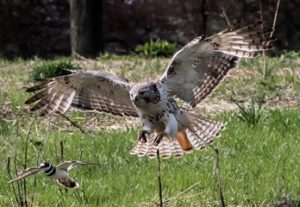
f9 and 1/1250, ISO 1250
In this image, because I needed both the killdeer and the hawk to be in focus I needed to use a larger f stop (f9). Aperture here was my prime consideration because the magic of the photo was being able to see both birds clearly. Had the wings been slightly blurred due to the camera needing to choose a slower shutter speed (due to the higher f stop)I felt the image would still have worked.
To get correct exposure we are generally moving aperture and shutter speed in opposite directions. As we increase the opening of the lens-thereby letting in more light-the sensor requires that we shorten the shutter speed. Otherwise we would overexpose the image-too wide of an opening combined with too long of an exposure time—in both cases letting a lot of light hit the sensor for too long.
ISO is a standardized (across brands/models) designation for how sensitive the sensor is to light-similar to the old film speeds. Some folks think of it as the “light balancer”. In other words, most of us think of correct exposure firstly in terms of aperture and shutter speed and only lastly use ISO to balance out an exposure if need be. Base ISO is typically 100-that being the least sensitive. This number can increase dramatically however on most digital cameras-as high as 12000 or even higher. Higher ISO numbers allow for smaller lens openings (higher f numbers) or for shorter shutter speeds.
The final effect of ISO level on images is unfortunately that of digital noise. This is actually distortion of the image that looks like specks or graininess. The higher the ISO the more digital noise we get. Determining how much noise your camera creates at various ISO levels is primarily just trial and error. Many cameras can easily handle ISO levels up to 1600. Test your camera out to determine its limitations.
So exposure is always a compromise between these three elements of the exposure triangle-there are constraints to each of them and we often have to decide which element is the most important to our image.
So where does this take us in terms of shooting modes? Our choices are aperture priority, shutter priority or fully manual. Aperture priority (designated on your top dial as Av or A on Nikon) allows the user to choose the aperture desired and then the camera makes the correct exposure by choosing the shutter speed for you. Shutter priority (designated as Tv in Canon and S in Nikon) allows the user to choose the shutter speed and then makes the correct exposure by choosing the aperture for you. Manual mode (designated as M) requires you to choose both aperture and shutter speed, which can be very difficult during times of unpredictable motion of your subject.
My experience has been that wildlife photographers use Aperture priority the most often. This is not to say that Shutter priority or Manual are never used-as there are certainly scenarios that call for these modes. But my experience has been that especially as beginners we can safely use Aperture priority for most of our shooting. Why is this?
When sunlight is plentiful I think the easiest (and quickest way in the field) to achieve correct exposure is to shoot in Aperture priority mode. The camera only requires one input from you and this number can be changed quickly if your subject or conditions change. Also, because I like portrait bokeh the first thing I think about is what f number do I need in order to keep the bird sharp but the background blurred. Again, the smaller the f number the less foreground to background sharpness we get. On my 100-400mm zoom lens my smallest f number is f4.5-and I have usually found this number to be perfect for the smaller songbirds (warblers, sparrows etc). As my subject gets larger-say a duck-I then increase my f number-maybe to f8.
The other advantage to starting with the largest shutter opening that suits my subject (the smallest f number) is that the larger the lens opening the faster my shutter speed which is critical for birds that are moving. Remember, if I pick a large aperture then my camera will move shutter speed in the opposite direction-choosing a faster shutter speed-to balance out the amount of light hitting the sensor.
Additionally, because your camera is more limited in f number options than it is in shutter speed I find it best to control aperture first. f4 or f5.6 may be the largest apertures available to me with the lens I am using-and I am often choosing this max so that firstly I can get faster shutter speeds and secondly to get the bokeh I want. I simply do not have the option to open the lens any wider. But many digital cameras have shutter speed options from 30 seconds to 1/8000 of a second-a huge range to choose from. Also, an image can generally tolerate faster shutter speeds than strictly needed. In other words I can choose f4.5 because of the bokeh I want and the camera may choose a shutter speed of 1/500 or it may choose 1/750-either being fine if I don’t have too much subject motion. As long as 1/500 is enough to stop the action I really cannot tell the difference in the final image between 1/500 and 1/750, whereas with a small bird I can see the difference in bokeh between f4 and f5.6.
Finally what action should we take in terms of our final variable-that of ISO? We will continue this topic in Part II of this article where we’ll talk about Auto-ISO and Exposure Compensation to finish off our discussion of shooting modes. But in the meantime to get started with Aperture priority mode I would suggest one of two ISO settings. If you are shooting with plenty of available light you can probably leave ISO set to base which is most likely 100 on your camera. If available light is poor or you are moving between well-lit and badly lit conditions you will have better results using Auto ISO (letting the camera select the ISO number). Either of these ISO options frees you from having to consider this third variable much while you are shooting right now.
Using Aperture priority will let you experiment with bokeh and portraiture in a way that Program mode did not allow. See what you like. Do you prefer lots of bokeh or would you rather see plenty of sharpness throughout the whole image plane? It’s totally up to you and this mode will let you explore that. See you out there!
by Demayne Murphy
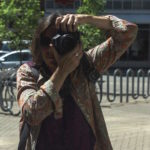
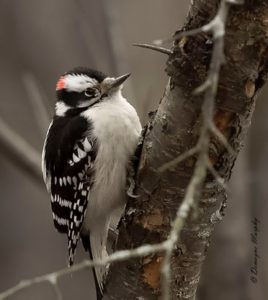
Upon first glance this photo, taken without any support, appears sharp. However, if we take a close-up cross section-below-we can see that it is disappointingly soft.
I’m going to start this third article by assuming you’ve now become hooked on bird photography. So on we go! You’ve tried lots of photos maybe using the beginning settings I laid out in last month’s article. Hopefully you’re getting enough light in your images. But maybe you’re still not getting acceptable sharpness? We could at this point address the Exposure Triangle-the interrelationship between Aperture, Shutter Speed And ISO-knowing that shutter speed is an important factor in sharpness. But I think we should first talk about camera support. I think this may ultimately be more important for most of us when talking about sharpness.
Most digital camera systems are still quite heavy. The Canon 7d MKII paired with the 100-400 MK II lens weighs in at about 5.60 pounds. A similar Nikon setup would also top 5 pounds. You are then expected to hold this horizontally for long periods of time while you are aiming and shooting. And don’t forget you still have to breathe during this process. So unless you are physically capable of holding this equipment rock steady you are going to get image blur to some extent. I learned pretty early on that even if I had enough light to get very fast shutter speeds I was still getting a slight softness in my images. And digital images are very unforgiving of blur. We can all easily enlarge images to see exactly how sharp a photo is. So even if you captured a fantastic image you will be disappointed if it isn’t tack sharp.
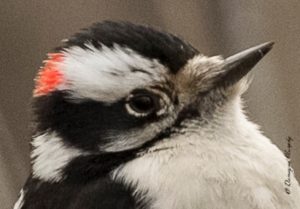
This is not to say that it is impossible to shoot hand-held, without some sort of support. Some photographers do this amazingly well as you will see below. But for many of us it simply isn’t possible. This was a hard lesson for me to learn as I value mobility. I like to walk longer distances; I like to climb up on things or get down onto the ground for different vantage points. So carrying my rig mounted on a tripod just doesn’t appeal to me. However, frustration with unacceptable image softness finally forced me to at least make the compromise of using a monopod. And that is how I currently shoot; but I know that eventually I will need to shift to a tripod to get the sharpness I want in more of my photos.
A monopod has the advantage of light weight and easier maneuverability over most tripods. It also uses a simplified head-the piece that mounts the camera to the monopod so it is very easy to operate quickly. It does however lack the stability of three legs. This is the choice I would encourage you to make next. Invest in a monopod or a tripod. You should decide on the amount of stability you think you need (possibly based in part on your physical condition) vs. how important maneuverability/added weight are to your shooting style.
In spite of the internet advice available, I don’t believe it is necessary to start with something hugely expensive. My monopod costs roughly $90 plus another $115 for the head. The tripod used by Emil below costs about $279 in the carbon fiber version (very lightweight) and this includes the ball head. The aluminum version clocks in at about $150 including the same head. I have listed the models below. Yes, you can easily spend $700 on a carbon fiber tripod and another $600 for the head. But it simply isn’t necessary at this point. Aim for the quality you can easily afford. And save the rest of your money for a birding trip!
One thing you should take note of when purchasing a mono or tripod is the height of the support in relation to your own height. You want to be able to mount your camera and have the support extend vertically to a level that is comfortable for you to see through your viewfinder without bending down at all. And you should not have to extend the center column of the tripod all the way to its maximum to do this. When the center column is fully extended the tripod becomes unsteady with the weight of your camera perched so far above the three legs. So do take note of the height of the tripod with the center column maybe less than halfway extended. The other critical factor is the load capacity of the support. You must choose a model that can support at least the weight of your current camera/lens combo. If in doubt go up in support weight rather than down.
A lesser consideration would be how many leg segments the support uses and the type of locking mechanism for the legs. In terms of segments-the more segments the smaller the folded length-so it is easier to store and carry when folded up but the longer it takes to extend it in the field. Conversely, fewer segments take less time to extend but have a longer folded length. The segments will then be locked with either twist locks or flip locks. These factors seem to come down largely to matters of personal preference.
You must then purchase a head-the piece that connects the camera to the support. Monopod heads are quite simple in that they only need accommodate movement up and down. If you want to move your camera left/right you simply twist the whole set up. I would actually advise not purchasing some of the cheap tilt heads from Oben or Manfrotto-the under $100 category. Do spend a little more and get a 90 degree tilt head from Sirui or Kirk or Really Right Stuff (Sirui being the budget version of this trio-but highly acceptable.)
Tripod heads come in quite an array of styles-and prices. A ball head is what you are looking for (avoid pan and tilt or geared heads which are not suited for this kind of photography; and gimbal heads are generally used for 500mm or longer lens set ups.) Again, stay away from the under $100 heads.
Below I’ve included some additional examples of shots taken with and without supports so you can judge for yourself. See you out there!
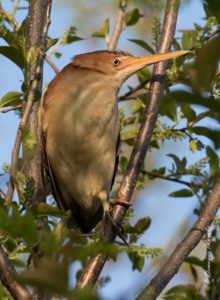
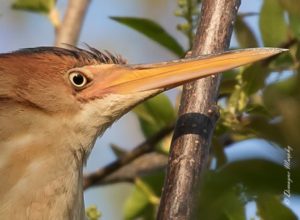
Canon 7D Mk II, coupled with Canon 100-400 Mk II.
Oben CTM-2400 4-Section Carbon Fiber MONOPOD, retail $90 and Sirui L-10 Monopod Tilt Head, retail $115
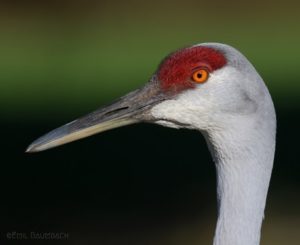
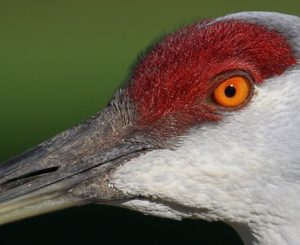
Canon 7D Mk II, coupled with Canon 100-400 Mk II and 1.4X telextender.
MeFoto Roadtrip carbon fiber TRIPOD (retail $269) which includes the MeFoto Q1 ball head.
Given that there is always an exception to any rule I have included the below photo which was taken handheld. It is satifyingly sharp. But again-I think this to be the exception to the rule. Well done Leo!
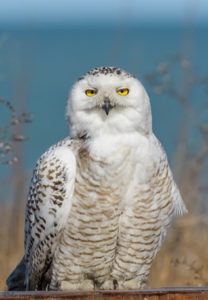
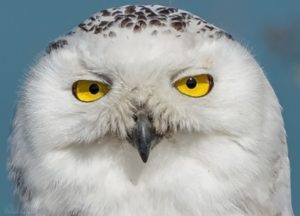
Nikon D500 paired with the 200-500mm lens and HANDHELD.
by Demayne Murphy
